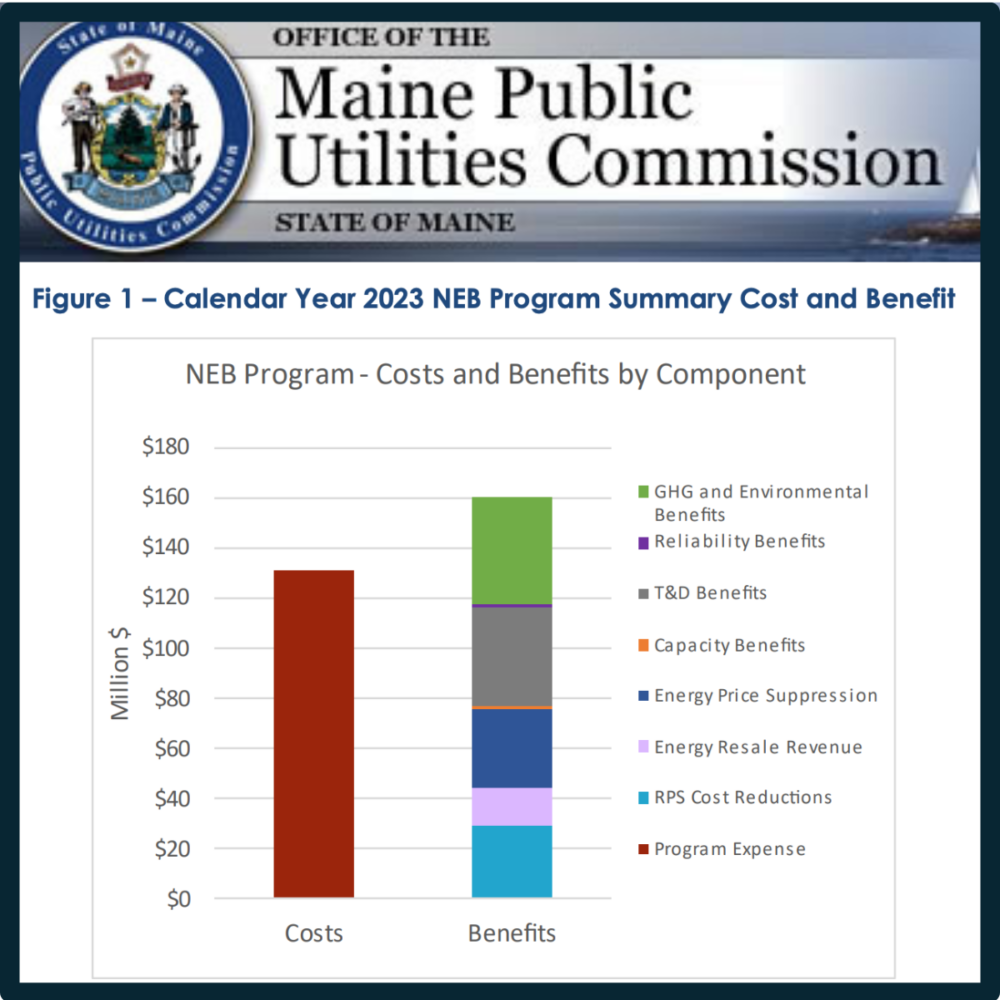
A growing body of research shows that community solar can reduce long-term costs for all ratepayers
WASHINGTON — A recent analysis commissioned by the Maine Public Utilities Commission (MPUC) has determined that the benefits of distributed energy generation from solar utilizing the net energy billing (NEB) program far outweigh the program’s cost by almost $30 million.
The independent analysis was directed in statute by the Maine Legislature and examines the costs and benefits of the state’s community solar program by utilizing verifiable methodology and an independent economic analysis. The study found that for every dollar spent on the program, $1.23 is returned in benefits.
“In state legislatures across the country, we see bipartisan and widespread public support for community solar, including from a diverse coalition of groups — from farmers and businesses, to environmental justice and ratepayer advocates. These groups rally behind community solar not only because it provides direct bill savings to subscribers, but because it’s a clear net financial, environmental, and societal benefit to all,” said Jeff Cramer, CEO of the Coalition for Community Solar Access.
The Maine study joins a growing body of evidence from states across the country that shine light on monopoly utilities’ efforts to exclude the quantifiable benefits of community solar and other distributed energy resources that can reduce long-term costs for all ratepayers.
These analyses consistently show that smaller projects built in-state, closer to where the energy is being consumed, make more efficient use of existing infrastructure and allow utilities to avoid poles, wires, transformer costs, and other investments they would otherwise pass onto ratepayers.
In New Hampshire, for example, even the largest state utilities admitted to the benefits of distributed generation. After New Hampshire Governor Sununu commissioned a study that found distributed generation created between $0.11/KWh and $0.18/KWh of value in 2021 and could create up to $0.23/KWh of value in 2035, the state’s utilities ‘agreed that distributed generation facilities can provide greater benefits than larger generation resources.’”
In Ohio, a recent analysis completed by former Texas Public Utility Commissioner Karl R. Rábago shows that the costs of community solar legislation currently being considered would be offset by the program’s benefits from “avoided costs” alone, without including indirect benefits like reducing dependency on imported energy, economic development, and job creation that results from building a strong, locally based electricity generation sector.
“Even using the most conservative estimates, my analysis found community solar proposed in legislation would lower electric bills for all Ohio residential customers, largely due to reductions of expensive energy imports from other states,” said Rábago.
In Virginia, a report from Dunsky Energy + Climate Advisors found that state utilities overestimate the costs and underestimate the benefits that Virginia’s Shared Solar Program has brought consumers. They found that expanding the Program could bring up to $125 million in benefits to the state in the first three years alone.
A national study from grid modeling expert Vibrant Clean Energy, showed that if more than 10% of the national electric grid was made up of distributed energy projects, ratepayers would save nearly half a trillion dollars versus if those projects didn’t exist.
The groundswell of public support and clear financial and societal benefits across a variety of states nationally is proof of the value community solar can bring to communities.
###